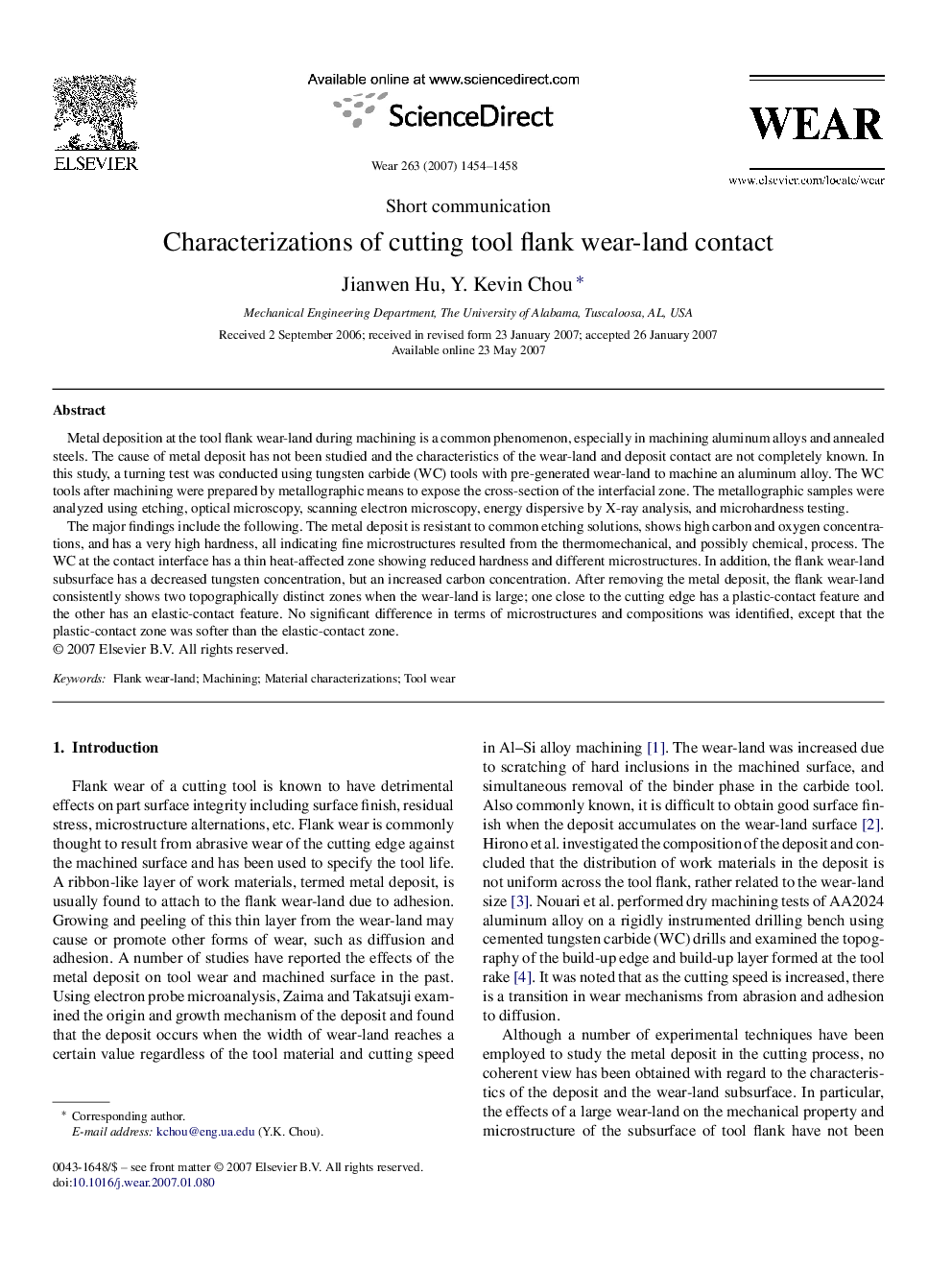| Article ID | Journal | Published Year | Pages | File Type |
|---|---|---|---|---|
| 620046 | Wear | 2007 | 5 Pages |
Metal deposition at the tool flank wear-land during machining is a common phenomenon, especially in machining aluminum alloys and annealed steels. The cause of metal deposit has not been studied and the characteristics of the wear-land and deposit contact are not completely known. In this study, a turning test was conducted using tungsten carbide (WC) tools with pre-generated wear-land to machine an aluminum alloy. The WC tools after machining were prepared by metallographic means to expose the cross-section of the interfacial zone. The metallographic samples were analyzed using etching, optical microscopy, scanning electron microscopy, energy dispersive by X-ray analysis, and microhardness testing.The major findings include the following. The metal deposit is resistant to common etching solutions, shows high carbon and oxygen concentrations, and has a very high hardness, all indicating fine microstructures resulted from the thermomechanical, and possibly chemical, process. The WC at the contact interface has a thin heat-affected zone showing reduced hardness and different microstructures. In addition, the flank wear-land subsurface has a decreased tungsten concentration, but an increased carbon concentration. After removing the metal deposit, the flank wear-land consistently shows two topographically distinct zones when the wear-land is large; one close to the cutting edge has a plastic-contact feature and the other has an elastic-contact feature. No significant difference in terms of microstructures and compositions was identified, except that the plastic-contact zone was softer than the elastic-contact zone.
